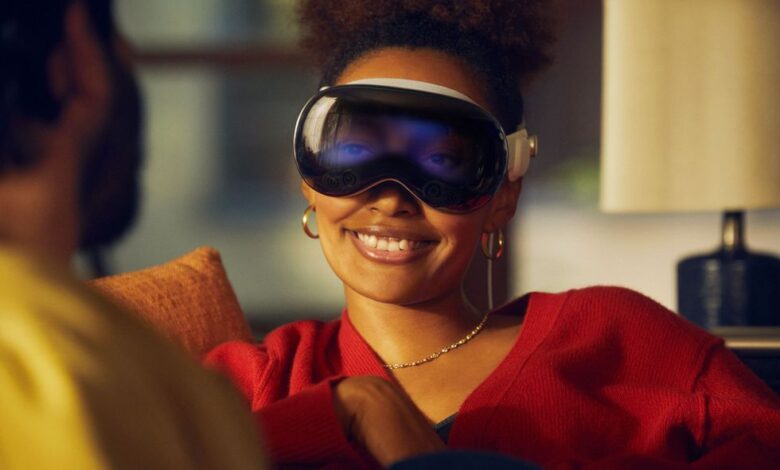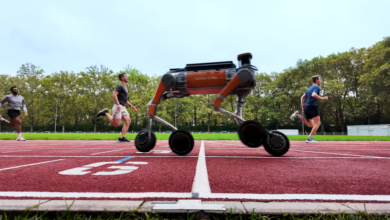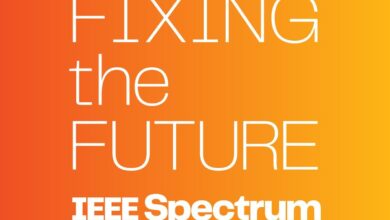A New Alliance Is Advancing Augmented Reality

Apple’s Vision Pro headset might just be the breakthrough product that the augmented-reality industry has been waiting for to catalyze the widespread adoption of AR technology, according to the IEEE’s AR Alliance.
The new alliance’s goal is to foster and encourage the development of AR technologies, components, devices, solutions, and platforms. It is a program of the IEEE Industry Standards and Technology Organization (ISTO), a global, not-for-profit corporation that provides its member organizations with legal and financial infrastructure and administrative support for standards development and market adoption of emerging technologies.
In addition to other headsets on the market, such as Meta’s Oculus Quest 3, the US $3,499 Vision Pro could invigorate the market, members of the AR Alliance say.
“Unlike many other devices, Vision Pro goes beyond gaming and entertainment,” says Bharath Rajagopalan, the alliance’s chair. “Users can engage in productivity activities such as checking email and reading documents. Even though the headset isn’t technically pure AR, it is a way of letting people simultaneously see the real world and the digital world and interact with content in an intuitive and compelling way.”
“The launch of the Vision Pro could be a watershed moment for the AR industry,” adds Rajagopalan, who is director of strategic marketing for STMicroelectronics, a global semiconductor company. STM is one of the alliance’s founding members.
“When a technology leader like Apple comes into this domain in such a big way, it helps to validate the category,” Rajagopalan says. “To advance AR, we need to enable everyday use of the technology for the average user, not just the techies of the world.”
“To advance AR, we need to enable everyday use of the technology for the average user, not just the techies of the world.”
After trying out the Vision Pro, Rajagopalan says he believes the headset, which integrates an array of technologies, is the kind of device that is needed to bring together companies in the hardware ecosystem to advance AR technology.
“Apple is unique in the sense that it develops, or facilitates the development of, the many critical technologies and components for such a device,” he says. But companies that don’t or can’t take that approach “will have to pick and choose different classes of technologies and components to integrate into their products. To facilitate faster time to market, enable interoperability, ensure a robust supply chain, and drive for lower costs, having standards and protocols will be a key element.”
That’s where the AR Alliance comes in.
Leveraging existing technical standards
The alliance grew out of the LaSAR Alliance, a collaboration of companies that worked to advance laser-scanning technology for use as displays on AR wearables such as smart glasses. The organization decided to expand the scope and rebrand the alliance last year after fulfilling its mission of establishing laser scanning as a core AR display technology.
While the alliance was reorganizing, Apple unveiled the Vision Pro. Several LaSAR Alliance members said the timing was right to advance AR beyond display technologies—which led to the AR Alliance. Corning, Dispelix, Essilor Luxottica, Microoled, and OptoFidelity are some of the other member organizations and founding members, in addition to STM.
“We decided to take what we did for laser-scanning technology and think about how we could address the overall needs of the AR marketplace,” Rajagopalan says. “We asked ourselves what were the things that were really going to help this industry and the market advance. Just like for other industries, the way to do it is to have standards and protocols and an ecosystem that companies can coalesce around.
“A benefit of the alliance being part of IEEE-ISTO is that it can leverage IEEE’s work on existing AR, VR, and mixed-reality standards.”
Tackling image quality, connectivity, and certification
The first step the alliance took was to meet with companies building AR hardware and software to find out their needs and to solicit ideas.
The businesses “asked for a neutral environment that allows companies to come together—not competitively but cooperatively,” Rajagopalan says. Their other requests were to work together on addressing key challenges such as improving image quality, tackling connectivity challenges, and developing technical standards necessary for product certifications.
With more headsets expected to come on the market, Rajagopalan says, the alliance wants to ensure there are uniform ways to measure their image quality. Currently none exist for AR devices, so the alliance’s image quality methods, metrics, and metrology working group is researching and developing approaches and techniques.
Another group is working to establish connectivity protocols for smart glasses, so-called light AR. Such glasses let users access digital content such as maps, calendars, and other apps that deliver relevant information, and they can display instructions while the user interacts with the physical world.
A compelling user experience requires smooth, reliable wireless connectivity. Working with existing standards but adapting them for the needs of smart glasses is the approach the alliance is taking, such as by adapting latency and bandwidth specifications, Rajagopalan says.
Another group of the AR Alliance is assisting the Underwriters Laboratory Technical Committee 8400 with establishing standards for testing and certifying augmented, virtual, and mixed-reality products. UL is in the process of defining standards and certification requirements.
UL wanted a single voice for the industry, Rajagopalan says, and it didn’t want one that might be biased in favor of one company.
“The reason for forming this alliance is so that we can be that voice of the industry,” he says. “Our tagline is Building AR Together. That’s the whole point.”
To participate in the alliance, you can apply here.
IEEE Spectrum



